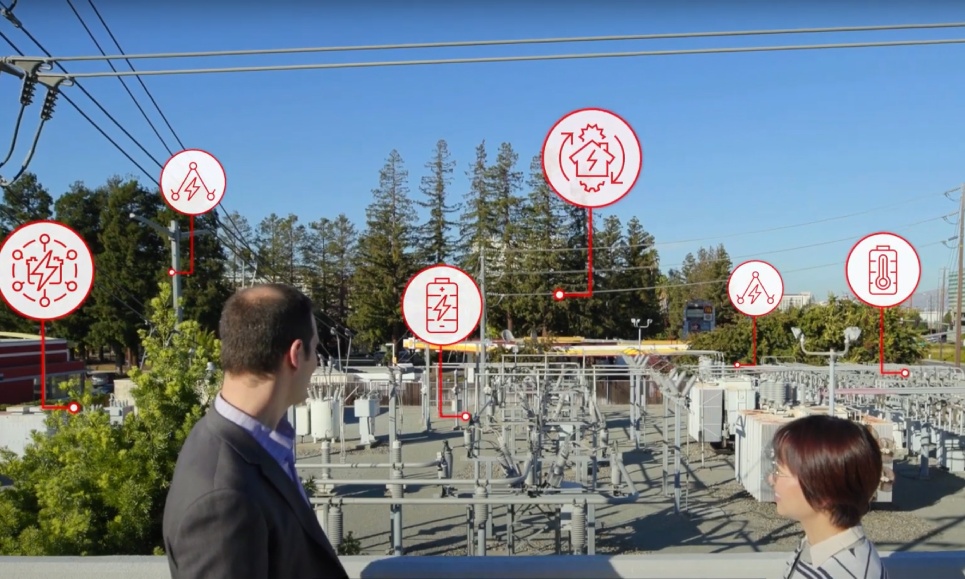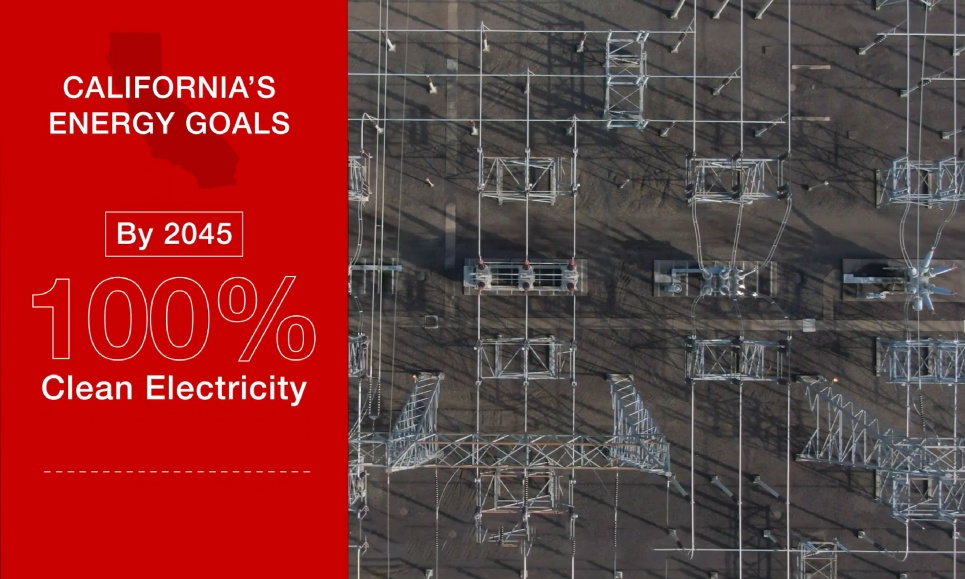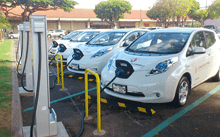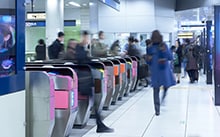California’s vast electricity grid infrastructure, which supports the fifth largest economy in the world1, is an intricate system that has always been challenging to manage. Yet this challenge is becoming far greater as the state contends with growing climate change impacts such as wildfires, heat waves, and drought. The integration of new clean energy technologies deemed critical to combatting climate change also necessitates more advanced grid planning and operation. A new modeling tool named GLOW – developed by Hitachi America, Ltd. and its partners – helps address this complexity and illuminates the path to carbon neutrality and grid resilience.
GLOW, which stands for GridLAB-D Open Workspace, is a powerful digital platform that simulates in detail the interplay of the components of an electrical distribution system, presenting this complex data in an easy-to-understand, highly visual format. With its intuitive user interface, the platform allows people with minimal training to understand how to plan for and manage new distributed energy sources so California can reduce the grid’s environmental impact while reliably meeting the state’s energy needs.
“I’m really excited about the GLOW modeling platform,” says Jonah Steinbuck, Director of the Energy Research and Development Division at the California Energy Commission, the state's primary energy policy and planning agency which provided funding support for the development of GLOW under the state’s Electric Program Investment Charge (EPIC program). “It helps us get a more detailed understanding of the electricity distribution system and expands the group of people who can work on these problems, helping utility planners, regulators, and researchers find more creative solutions to these critical issues we face.”
To understand how GLOW can improve energy resources, consider the typical day of a utility engineer who works on the grid. The moment the engineer arrives at work, there might be hundreds of new energy requests to address. The engineer must quickly determine how a new energy resource will impact the reliability, stability, and sustainability of grid operations. To get the necessary information to do the analysis, the engineer usually needs to speak with many different members of their team and various stakeholders throughout the organization.
In contrast to this often laborious, manual process, GLOW automatically obtains the necessary information, reducing the time and expense of conducting grid analysis. For example, the engineer can quickly determine how installation of the new energy resources will impact the reliability and resilience of utility circuits when voltages suddenly change.
For grid planners, the GLOW platform offers visual, graphical insights that allow them to determine where to make critical investments to expand and enhance the capabilities of the grid.

“It takes a whole village to estimate the impact of new energy sources and to collaborate to achieve carbon neutrality,” says Bo Yang, Senior Director of the Energy Solution Lab, Hitachi America, Ltd., a global provider of sustainable technology solutions that led the development of the GLOW platform. “GLOW offers an excellent environment so that stakeholders from one power company or even from other organizations can come together and collaborate.”
Oscar Tillberg, Head of Global Sales, Network Control, Hitachi Energy, says GLOW could have an important impact in the key area of Distributed Energy Resources (DERs). This energy industry acronym refers to small-scale power generation and storage technologies that are located close to where the electricity is used. One popular example is rooftop solar, which can generate energy for a house or building, and then send excess capacity back to the grid. California has embraced the adoption of DERs as an important strategy to increase renewable and zero-carbon resources and support transportation and building electrification. California leads the nation in distributed generation, with nearly 1.9 million solar projects2, which puts the state at the forefront of navigating the complex technological challenges.
“There’s a lot of discussion about how to optimize DERs,” Tillberg says. “It’s not just where you put them physically, but how you monetize them.” In addition, as the use of solar units increases, it could lead to issues like congestion, a condition where the lowest-price electricity can’t flow freely to a specific area. He also underscored the need to reach agreement on how DERs should be treated, modeled, and then provisioned by regulatory agencies.
GLOW assists utilities in addressing the complicated issues they face today and in the future. Making wise energy decisions is a paramount topic for California, as the state focuses on achieving carbon neutrality by 2045. Consider:

The California Energy Commission sees collaboration with private sector partners as fundamental to its progress toward carbon neutrality.
Under the EPIC program, the state has invested $1.1 billion in hundreds of projects to accelerate the transformation of the electricity sector to meet the state’s energy and climate goals. The state’s investments have catalyzed $10.5 billion in follow-on private investments and led to the commercialization of more than 70 technologies and services.8
GLOW was developed in partnership with Hitachi Energy; the California Energy Commission; Stanford's National Accelerator Lab, a federally funded R&D laboratory; and Gridworks, a nonprofit organization facilitating the adoption of clean energy.
Yang says GLOW demonstrates how Hitachi collaborates with public, private, and nonprofit institutions to enable a carbon-neutral future. “The traditional tools that utilities now use are more than 20 and 30 years old,” she says. “GLOW was designed with an open architecture in mind, so it can be easily expanded and future-proofed with the latest advances in artificial intelligence and operational technology.”

1Southern California’s $1.6 trillion economy bigger than 18 states combined, The San Diego Union-Tribune, https://www.sandiegouniontribune.com/business/story/2023-12-24/southern-californias-1-6-trillion-economy-bigger-than-18-states-combined
2California Leads the Nation in Distributed Generation, California Distributed Generation Statistics, https://www.californiadgstats.ca.gov/
3Governor Newsom Updates the Roadmap to California’s Clean Energy Future, Office of Governor, Gavin Newson, State of California, https://www.gov.ca.gov/2023/05/25/governor-newsom-updates-the-roadmap-to-californias-clean-energy-future/
4New Data Shows Growth in California’s Clean Electricity Portfolio and Battery Storage Capacity, California Energy Commission, State of California https://www.energy.ca.gov/news/2023-05/new-data-shows-growth-californias-clean-electricity-portfolio-and-battery
5Zero-Emission On-Road Medium-and Heavy-Duty Strategies, California Air Resources Board, State of California https://ww2.arb.ca.gov/resources/documents/zero-emission-road-medium-and-heavy-duty-strategies
625% Of California Passenger Vehicle Sales Are Now Electrified, Autoweek, https://www.autoweek.com/news/a44773527/california-ev-sales-record-2023/
7Electric Vehicle Chargers in California, California Energy Commission, State of California, https://www.energy.ca.gov/data-reports/energy-almanac/zero-emission-vehicle-and-infrastructure-statistics/electric-vehicle
8California’s Clean Energy Research and Development Program Delivers 10x Return on Investment, California Energy Commission, State of California, https://www.energy.ca.gov/news/2023-05/californias-clean-energy-research-and-development-program-delivers-10x-return







